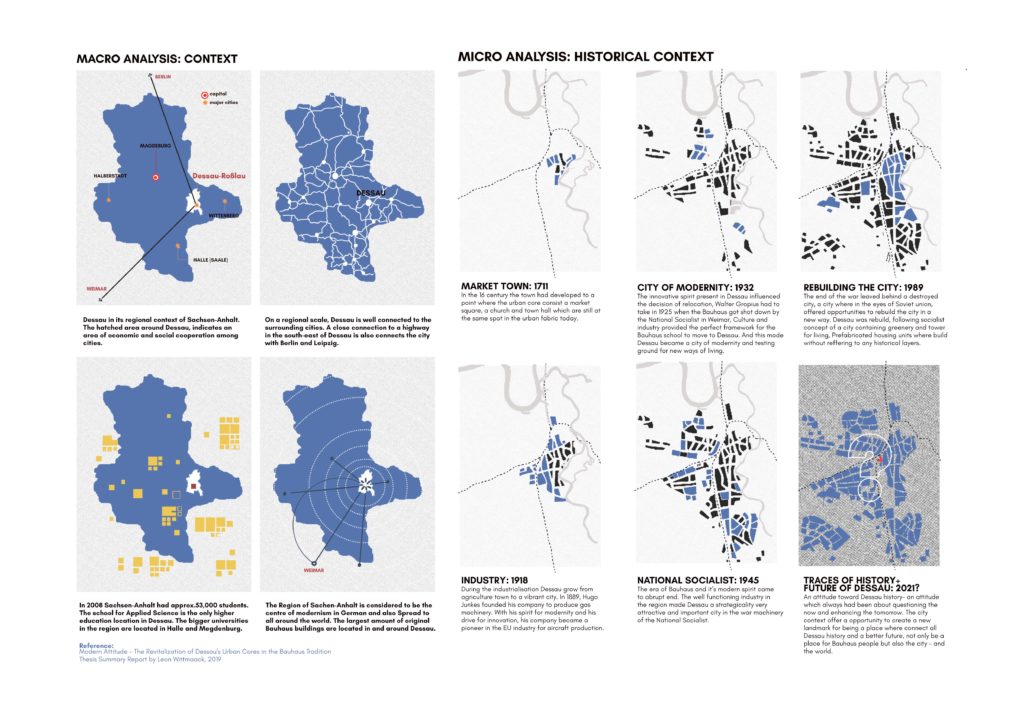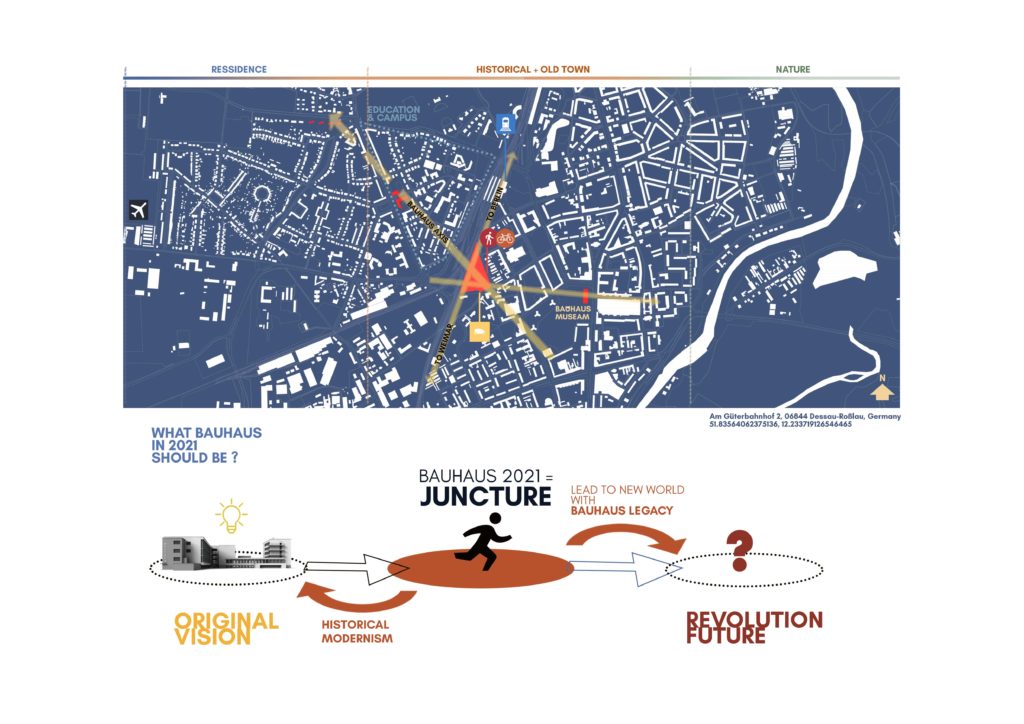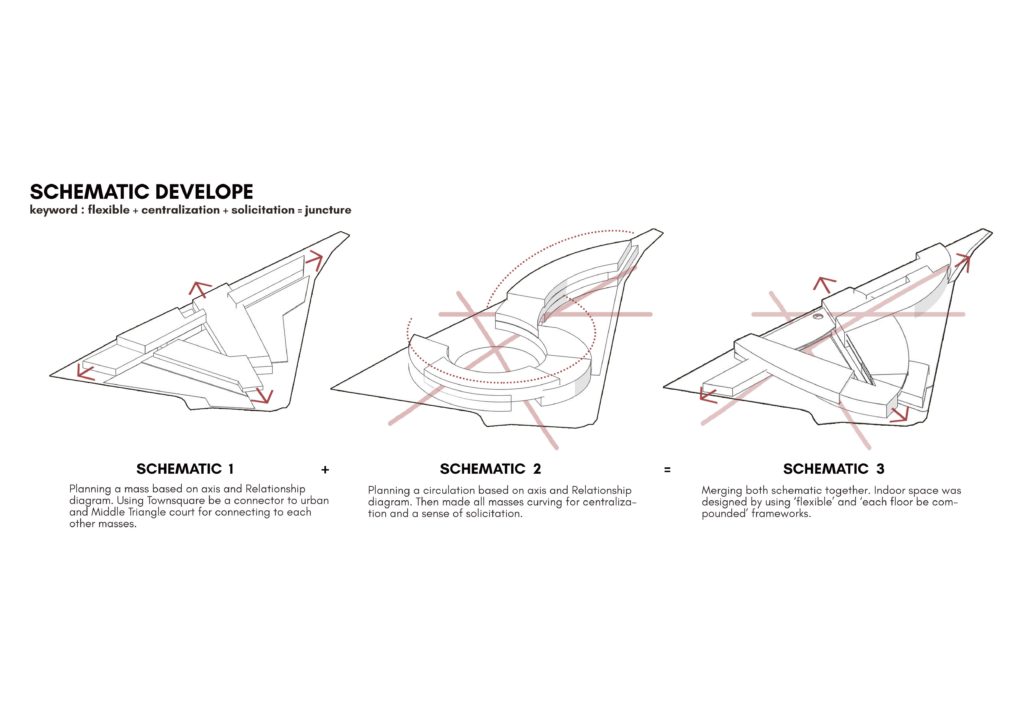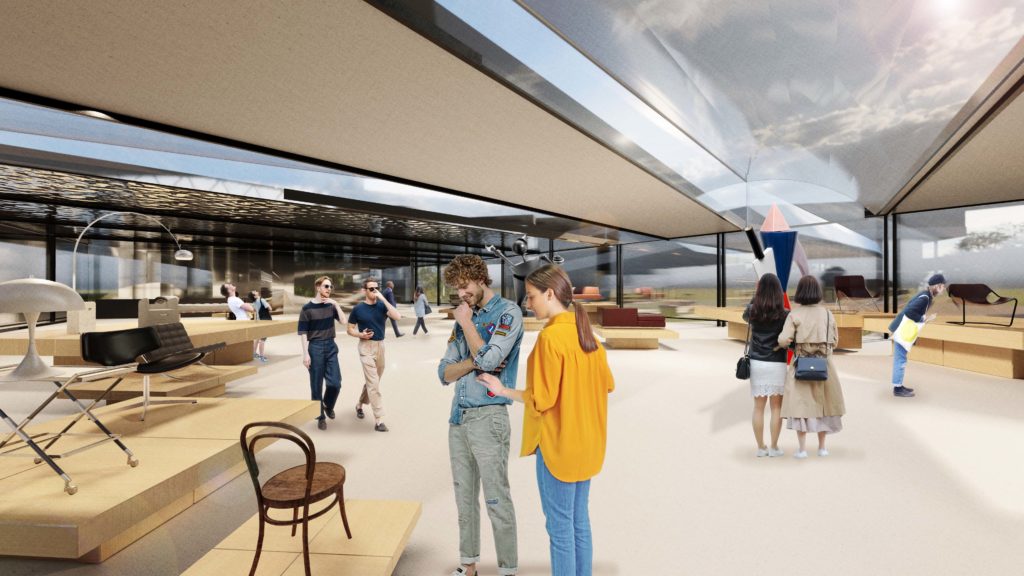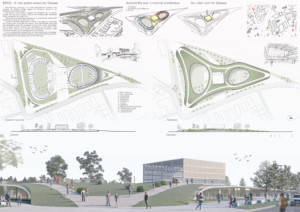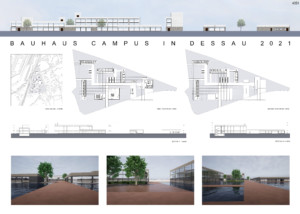Neither an ordinary art school nor a style, Bauhaus is the spirit of a people who want to find a new way or choice for making the world better by design. So, Bauhaus Campus in 2021 should be a place where make themself as a ‘Juncture’ – Bringing the original vision from the past and lead to the future with spirit of craftmanship and integration.
This project will be a space for ‘possibility’, in every function was designed to be a ‘flexible’ space as ‘everywhere can be exhibition space’ or ‘everyone can learn everywhere’. Because creativity should’nt obstruct or blockade. All enviroment willsupport student, lecturere, visitor or even a native can deliberate -and realise that design with a goodwill can make the world better.
MACRO ANALYSIS: CONTEXT
- Dessau in its regional context of Sachsen-Anhalt. The hatched area around Dessau, indicates an area of oconomic and social cooperation among cities.
- On a regional scale, Dessau is well connected to the surrounding cities. A close connection to a highway in the south-east of Dessau is also connects the city with Berlin and Leipzig.
- In 2008 Sachsen-Anhalt had approx.53,000 students. The school for Applied Science is the only higher education location in Dessau. The bigger universities in the region are located in Halle and Megdenburg.
- The Region of Sachen-Anhalt is considered to be the centre of modernism in German and also Spread to all around the world. The largest amount of original Bauhaus buildings are located in and around Dessau.
MICRO ANALYSIS: HISTORICAL CONTEXT
- MARKET TOWN: 1711 In the 16 century the town had developed to a point where the urban core consist a market square, a church and town hall which are still at the same spot in the urban fabric today.
- INDUSTRY: 1918 During the industrialisation Dessau grow from agriculture town to a vibrant city. In 1889, Hugo Junkes founded his company to produce gas machinery. With his spirit for modernity and his drive for innovation, his company became a pioneer in the EU industry for aircraft production.
- CITY OF MODERNITY: 1932 The innovative spirit present in Dessau influenced the decision of relocation, Walter Gropius had to take in 1925 when the Bauhaus got shot down by the National Socialist in Weimar, Culture and industry provided the perfect framework for the Bauhaus school to move to Dessau. And this made Dessau became a city of modernity and testing ground for new ways of living.
- NATIONAL SOCIALIST: 1945 The era of Bauhaus and it’s modern spirit came to abrupt end. The well functioning industry in the region made Dessau a strategicality very attractive and important city in the war machinery of the National Socialist.
- REBUILDING THE CITY: 1989 The end of the war leaved behind a destroyed city, a city where in the eyes of Soviet union, offered opportunities to rebuild the city in a new way. Dessau was rebuild, following socialist concept of a city containing greenery and tower for living, Prefabricated housing units where build without reffering to any historical layers.
- TRACES OF HISTORY+ FUTURE OF DESSAU: 2021? An attitude toward Dessau history- an attitude which always had been about questioning the now and enhancing the tomorrow. The city context offer a opportunity to create a new landmark for being a place where connect all Dessau history and a better future, not only be a place for Bauhaus people but also the city – and the world.
Reference: Modern Attitude – The Revitalization of Dessau’s Urban Cores in the Bauhaus Tradition Thesis Summary Report by Leon Wittmaack, 2019
USER
student 120-160 : boarder + commute
lecturer 10-20 : boarder + commute
staff 10 : maid + security + cook
other student + visitor
guest
SCHEMATIC DEVELOPE
keyword : flexible + centralization + solicitation = juncture
- SCHEMATIC 1: Planning a mass based on axis and Relationship diagram. Using Townsquare be a connector to urban and Middle Triangle court for connecting to each other masses.
- SCHEMATIC 2 : Planning a circulation based on axis and Relationship diagram. Then made all masses curving for centraliza- tion and a sense of solicitation.
- SCHEMATIC 3 : Merging both schematic together. Indoor space was designed by using ‘flexible’ and ‘each floor be com- pounded’ frameworks.
CIRCULATION+FUNCTION
Each space was designed to be relate others and can be more than just only one function. Example : Using corridor to be a pathway and transfer space, Using ramp replace stair for making more creative thinking when user ‘go for walks’.



